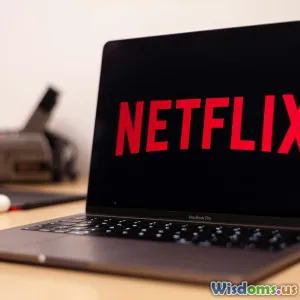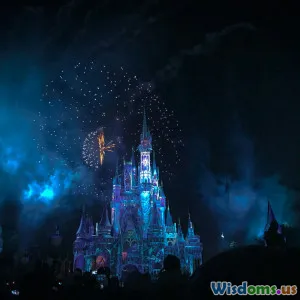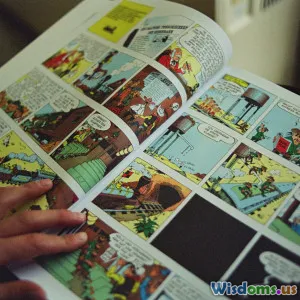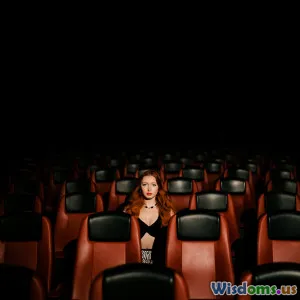
Comparing Breakfast at Tiffanys to Today’s Romcoms
9 min read An in-depth comparison between Breakfast at Tiffany's and modern romcoms, exploring evolving tropes, cultural shifts, and cinematic storytelling. (0 Reviews)
Comparing Breakfast at Tiffany's to Today’s Romcoms
Romantic comedies—often affectionately termed romcoms—hold a special place in cinematic history, blending love and humor to craft stories that resonate universally. Among these, Breakfast at Tiffany’s (1961) stands as an iconic benchmark. This Audrey Hepburn classic not only defined a genre but also carved a distinctive niche with its charm, sophistication, and subtle commentary on society. Fast forward to today’s romcoms, and we encounter a genre reshaped by cultural dynamics, diverse storytelling, and modern audience sensibilities.
This article delves deep into the contrasts and continuities between Breakfast at Tiffany’s and contemporary romantic comedies, revealing how romance on screen mirrors changing times, narratives, and expectations.
The Timeless Allure of Breakfast at Tiffany’s
Before examining today’s romcoms, understanding why Breakfast at Tiffany’s endures is crucial. Based on Truman Capote’s novella and directed by Blake Edwards, the film's lead, Holly Golightly, portrayed by Audrey Hepburn, revolutionizes the archetype of the romantic heroine.
Iconic Characterization
Holly Golightly is a captivating mix of whimsy, vulnerability, and independence. Her famous opening line, peering into the gleaming windows of Tiffany’s jewelry store, isn't just a scene but a metaphor for yearning—seeking stability amidst chaos. Unlike stereotypical damsels in distress, Holly is a complex figure navigating New York’s social strata with ambition and charm.
Her persona resonated because she balanced sophistication with raw emotions, presenting a multi-faceted woman grappling with her desires and fears. This depth was rare in early romcoms, many of which opted for simplistic portrayals.
Narrative Style and Pacing
Breakfast at Tiffany’s combines witty dialogue with a somber undertone, veering away from predictable romantic plotlines. The story eschews a fully happy ending, opting instead for a nuanced closure that reflects real-life complexities.
The film’s pacing allows moments of introspection alongside playful exchanges, giving audiences both laughter and contemplation. This balance has often been cited in film studies as a hallmark for creating emotional resonance.
Cultural and Societal Reflections
Released in the early 1960s, the film subtly mirrors the transitional social mores of its time. Holly’s unconventional lifestyle defies traditional female roles, capturing the spirit of a changing America inching toward liberation movements.
Scholars emphasize that Holly’s ambiguous morality, careerism, and quest for belonging foreshadowed evolving conversations about female autonomy.
Characteristics of Today’s Romantic Comedies
Modern romcoms inhabit a vastly different socio-cultural landscape. Influenced by globalization, social media, and shifting gender norms, today’s stories reflect both continuity and transformation.
Diversity and Representation
Unlike earlier romcoms dominated by homogenous casts, contemporary films strive for inclusiveness. Examples like Crazy Rich Asians (2018), To All the Boys I've Loved Before (2018), and The Big Sick (2017) foreground marginalized voices, reshaping the genre’s traditional narratives.
This diversification enriches storytelling by embedding unique cultural perspectives and broadening audience identification.
Technological Influence on Plot Devices
Digital communication permeates contemporary storytelling. Texting, dating apps, and social media now serve as pivotal plot elements. Movies like Set It Up (2018) use email and app algorithms not just as gimmicks but as essential mechanisms influencing character connections.
This contrasts starkly with Breakfast at Tiffany’s, where face-to-face interactions reign supreme.
Evolving Gender Roles
Modern romcoms reflect expanded ideas of masculinity and femininity. Protagonists often display emotional vulnerability regardless of gender, breaking conventional molds. Films such as La La Land (2016) and About Time (2013) emphasize emotional realism and personal growth.
Nonetheless, some critics argue that modern romcoms occasionally fall into clichéd tropes or overly idealized endings, revealing an ongoing tension between formula and innovation.
Comparing Core Themes and Narrative Techniques
From Pursuit of Escape to Search for Authenticity
Breakfast at Tiffany’s revolves around Holly’s escapist tendencies—a yearning to slip away from harsh realities. Contemporary romcoms are more inclined toward protagonists seeking authentic connections and self-realization.
For instance, Eternal Sunshine of the Spotless Mind (2004) and Silver Linings Playbook (2012) explore complex emotional landscapes and imperfect relationships rather than mere fairy tale romance.
Humor: Subtlety Versus Slapstick
The humor in Breakfast at Tiffany’s is sophisticated, often dry and laced with irony. Audrey Hepburn’s performance embodies this nuance, giving comedy a subtle layer within emotional depth.
Today’s romcoms deploy varied comedic styles—from sharp wit to broad physical gags. This spectrum widens appeal but sometimes sacrifices nuanced humor for accessibility.
Cinematic Style and Symbolism
The visual style of Breakfast at Tiffany’s leans heavily on iconic imagery—the little black dress, oversized sunglasses, and window gazing—which have inspired fashion and culture for decades.
Modern romcoms often experiment with cinematography and narrative structure. Richard Linklater’s Before trilogy (starting 1995) uses extended conversational scenes, while 500 Days of Summer (2009) adopts a nonlinear timeline, challenging traditional storytelling paths.
Cultural Impact and Legacy
Breakfast at Tiffany’s remains a cultural touchstone inspiring filmmakers and designers. Its influence extends beyond cinema—into fashion, theme jewelry, and even holiday traditions centered on Tiffany's itself.
Conversely, today’s romcoms reflect a fast-paced, technologically integrated culture with heightened expectations for realism and social inclusion. Their success, evidenced by a thriving streaming market and digital fan bases, demonstrates the genre’s adaptability.
Streaming platforms like Netflix and Hulu have democratized access, enabling niche stories to flourish, which was less feasible during the studio era of Breakfast at Tiffany’s.
Conclusion: Tradition and Transformation in Romcoms
While Breakfast at Tiffany’s and today’s romantic comedies differ markedly in style, themes, and social commentary, they share the central goal of exploring human connection and love’s complexities.
Holly Golightly’s enduring appeal lies in the film’s blend of charm, depth, and subtle critique of societal expectations. Contemporary romcoms, by embracing diversity and new story techniques, continue this tradition, ensuring the genre remains vibrant and relevant.
Understanding these parallels and contrasts not only enriches appreciation for cinematic history but also offers insights into evolving cultural narratives. Whether through a glamorous Manhattan window or a casual coffee shop meetup, the pursuit of romance on film remains a compelling mirror of our times.
References
- Capote, T. (1958). Breakfast at Tiffany’s (Novella).
- Edwards, B. (Director). (1961). Breakfast at Tiffany’s [Film]. Paramount Pictures.
- Dargis, M. (2017). How Rom-Coms Are Changing. The New York Times.
- Smith, S. L., & Choueiti, M. (2019). Inclusion in the Director’s Chair: Gender and Diversity in Film. Annenberg Inclusion Initiative.
- Segal, H. (2018). Modern Love: Diversity and Representation in Rom-Coms. Journal of Popular Culture, 51(4).
- Netflix. (2020). The Rise of Streaming Rom-Coms. Press Release.
By examining how Breakfast at Tiffany’s influenced and contrasts with modern romantic comedies, readers gain a layered understanding of romance narratives and their reflection of societal shifts.
Rate the Post
User Reviews
Other posts in Classic Movies
Popular Posts















